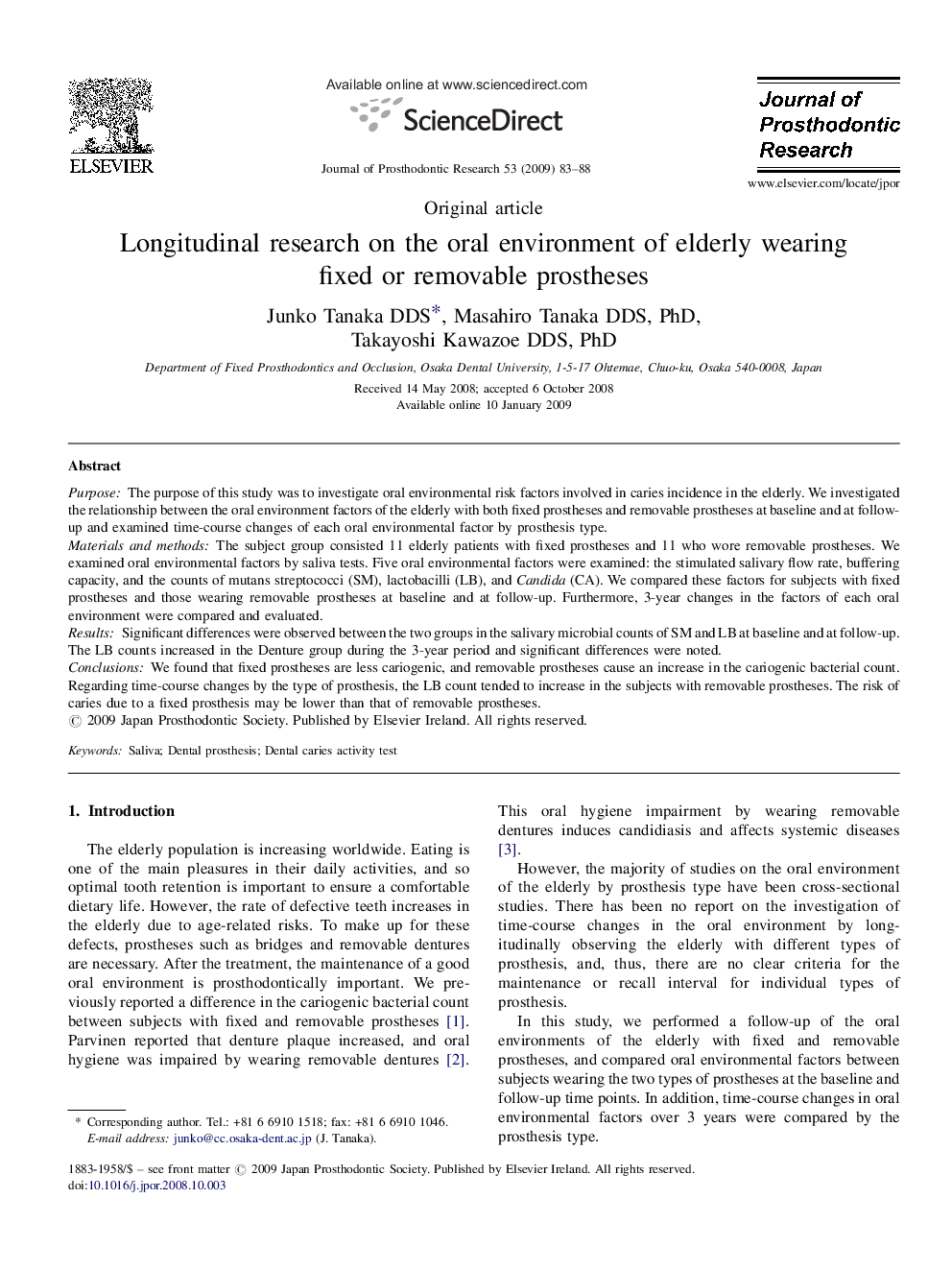| Article ID | Journal | Published Year | Pages | File Type |
|---|---|---|---|---|
| 3160789 | Journal of Prosthodontic Research | 2009 | 6 Pages |
PurposeThe purpose of this study was to investigate oral environmental risk factors involved in caries incidence in the elderly. We investigated the relationship between the oral environment factors of the elderly with both fixed prostheses and removable prostheses at baseline and at follow-up and examined time-course changes of each oral environmental factor by prosthesis type.Materials and methodsThe subject group consisted 11 elderly patients with fixed prostheses and 11 who wore removable prostheses. We examined oral environmental factors by saliva tests. Five oral environmental factors were examined: the stimulated salivary flow rate, buffering capacity, and the counts of mutans streptococci (SM), lactobacilli (LB), and Candida (CA). We compared these factors for subjects with fixed prostheses and those wearing removable prostheses at baseline and at follow-up. Furthermore, 3-year changes in the factors of each oral environment were compared and evaluated.ResultsSignificant differences were observed between the two groups in the salivary microbial counts of SM and LB at baseline and at follow-up. The LB counts increased in the Denture group during the 3-year period and significant differences were noted.ConclusionsWe found that fixed prostheses are less cariogenic, and removable prostheses cause an increase in the cariogenic bacterial count. Regarding time-course changes by the type of prosthesis, the LB count tended to increase in the subjects with removable prostheses. The risk of caries due to a fixed prosthesis may be lower than that of removable prostheses.
